Top 10 US food & beverage
trends of 2023
Trend 1: Consumers are shopping around for the best prices
Today’s shopper is savvier than ever: nearly 59% say they’re ‘very likely’ to shop around for the best deals on food and beverage products at the moment. A further 30.8% say they’re ‘somewhat likely’. Millennials are most likely to shop around (65.2% are ‘very likely’), while Boomers are the least (46.5%).
Top tip: Keep a close eye on your competitors’ prices and promotions and, where your brand offers better value, shout about it!
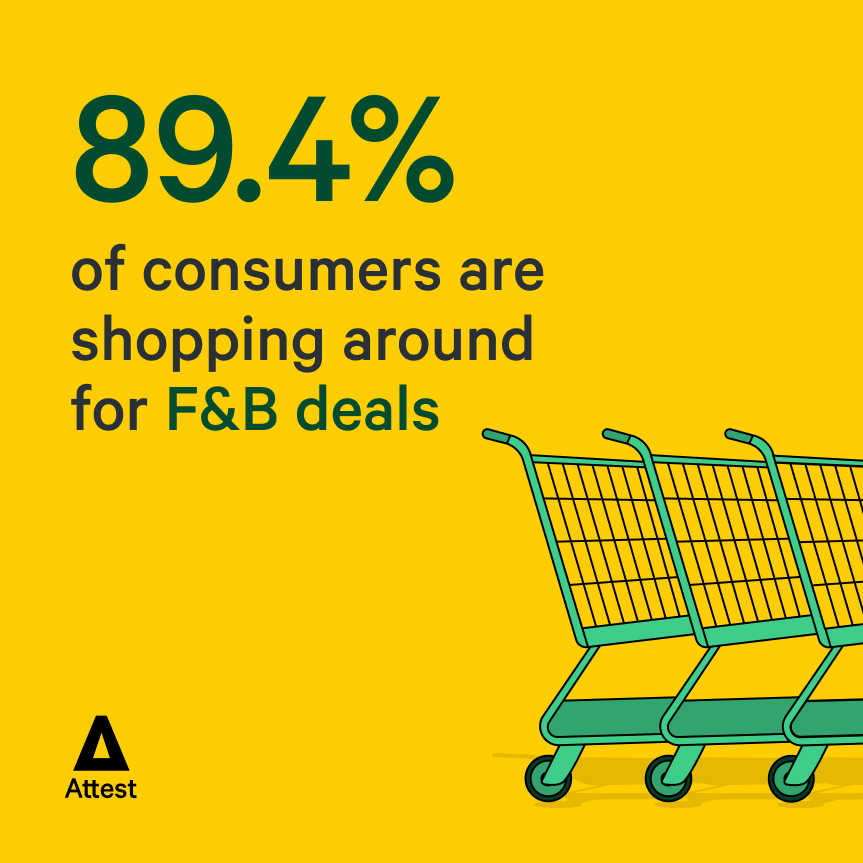
Trend 2: Shoppers visit multiple supermarkets
In their bid to find the best deals on groceries, 41.6% of Americans say they visit different supermarkets in person, while 33.5% check online. Gen Z are the demographic most likely to visit multiple stores, while Millennials are most likely to compare them online.
Top tip: US consumers are more supermarket-agnostic than they were before, so use a loyalty scheme as a means to keep them coming back.
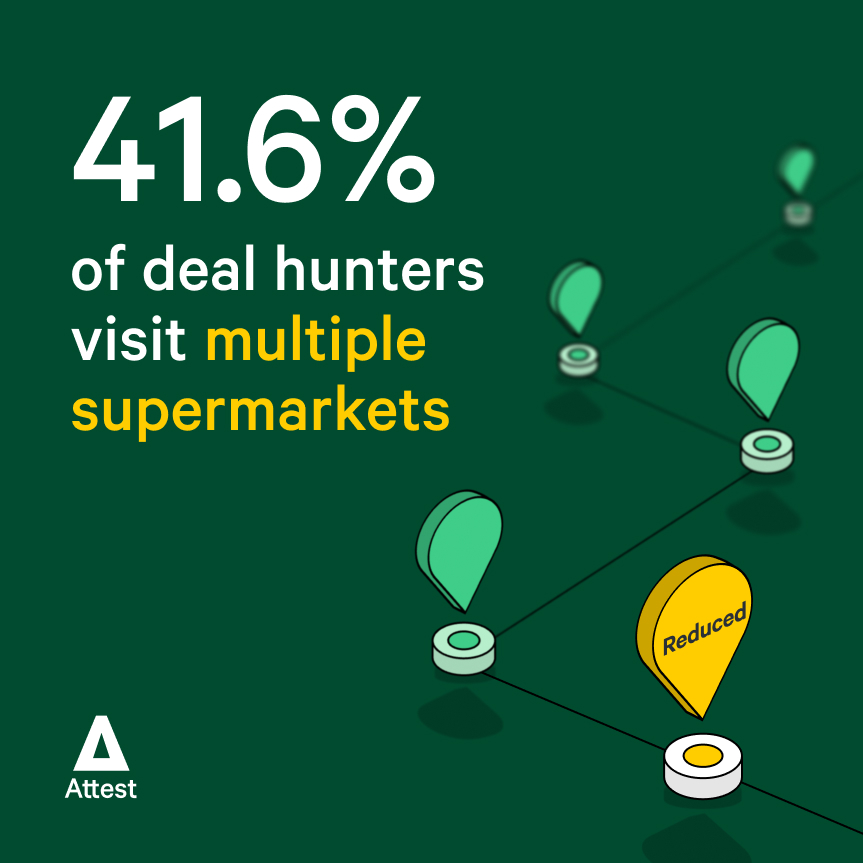
What’s the outlook for your brand?
Speak to your customers today
Send a free survey
Trend 3: Advertising is key for communicating value
Brands often cut their marketing budget when times are tough, but scrimping on advertising is a false economy: 58.2% of consumers who say they shop around for F&B deals rely on ads to stay informed. Promotional emails and mailings are also effective for reaching bargain hunters (40.1%), although older consumers are more likely to be paying attention to them than younger ones.
Top tip: Radio ads can provide an affordable but effective way to educate consumers about weekly special offers.
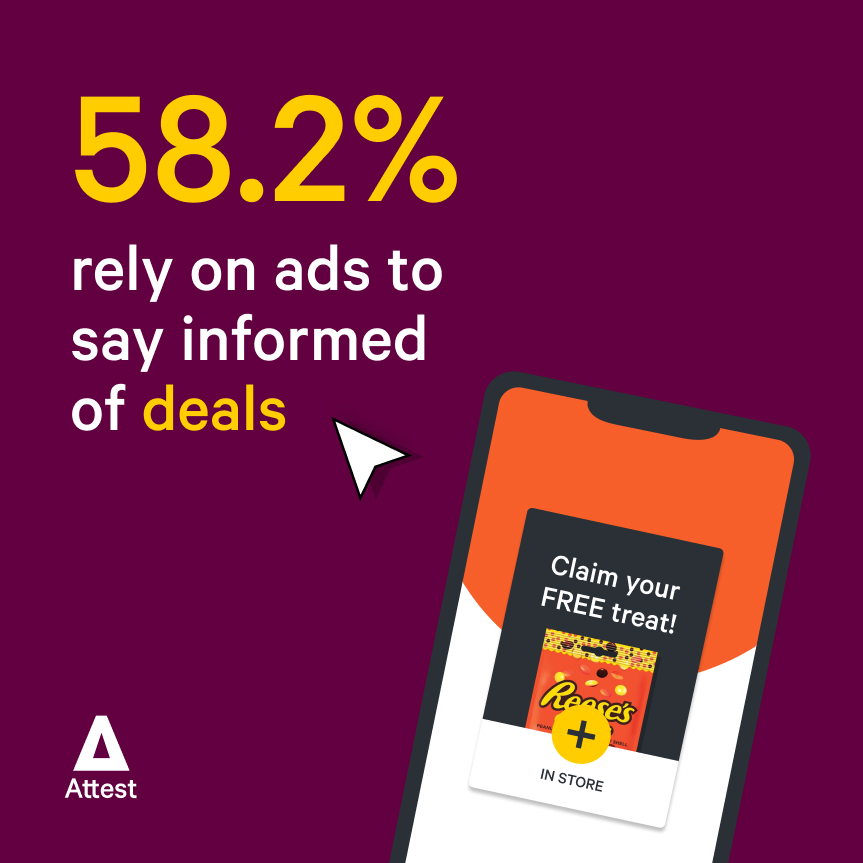
Trend 4: Expensive supermarkets will get the chop
Failure to stay competitive could cost supermarkets custom in the long term. When asked if they had stopped shopping at any supermarkets because of high prices or lack of deals, respondents were most likely to name Walmart, followed by Publix and Whole Foods Market.
Top tip: Discount supermarkets like Aldi are poised to pick up customers from other retailers; make sure your brand is available there.
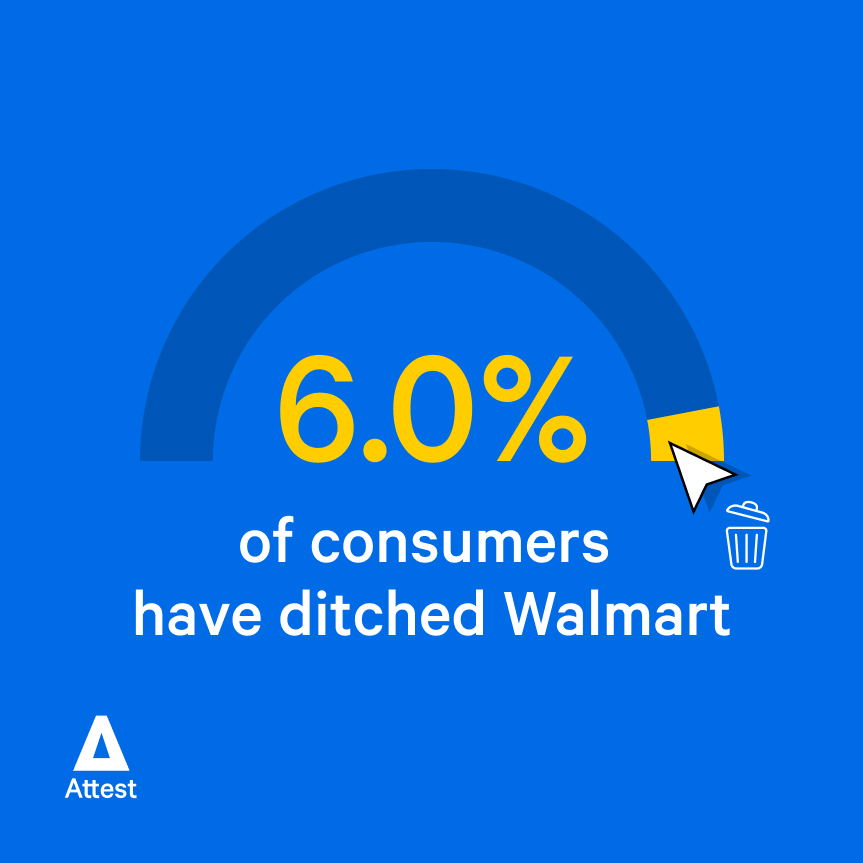
Attest gives us the ability to get these quick a-ha’s at a low threshold. By running a couple of short surveys it helps set us up and saves money.
Tripp Hughes, Senior Director of Consumer Strategy, Organic Valley
Trend 5: In-store shopping is perceived as better value
The pandemic might have boosted adoption of online shopping, but consumers still believe it’s better to go to a store when searching for the best deals on groceries. Nearly 55% of Americans think in-store shopping is best for bargain hunting, while only 18.6% favor online (the remainder don’t think there’s a difference).
Top tip: Incentivize shoppers to shop online by promoting online-only special offers alongside free delivery or curbside pickup.
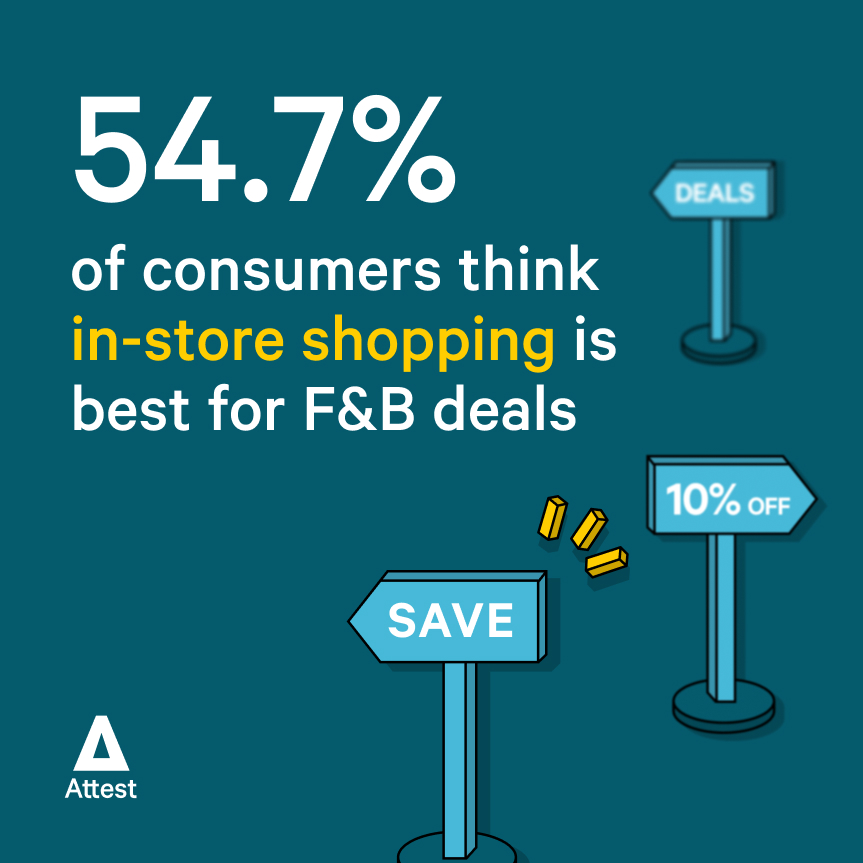
Trend 6: Discounts are the most effective promotion type
Discounting the price of a product is the tactic most likely to get Americans to buy it. Out of six promotion types, a discount was ranked as the most effective, closely followed by ‘buy one get one free’ deals. Offering a % of extra product free was ranked third. Meanwhile, giving extra loyalty points was deemed the least attractive offer.
Top tip: Shoppers showed a clear preference for BOGOF over ‘buy three products, get the cheapest free’ deals.
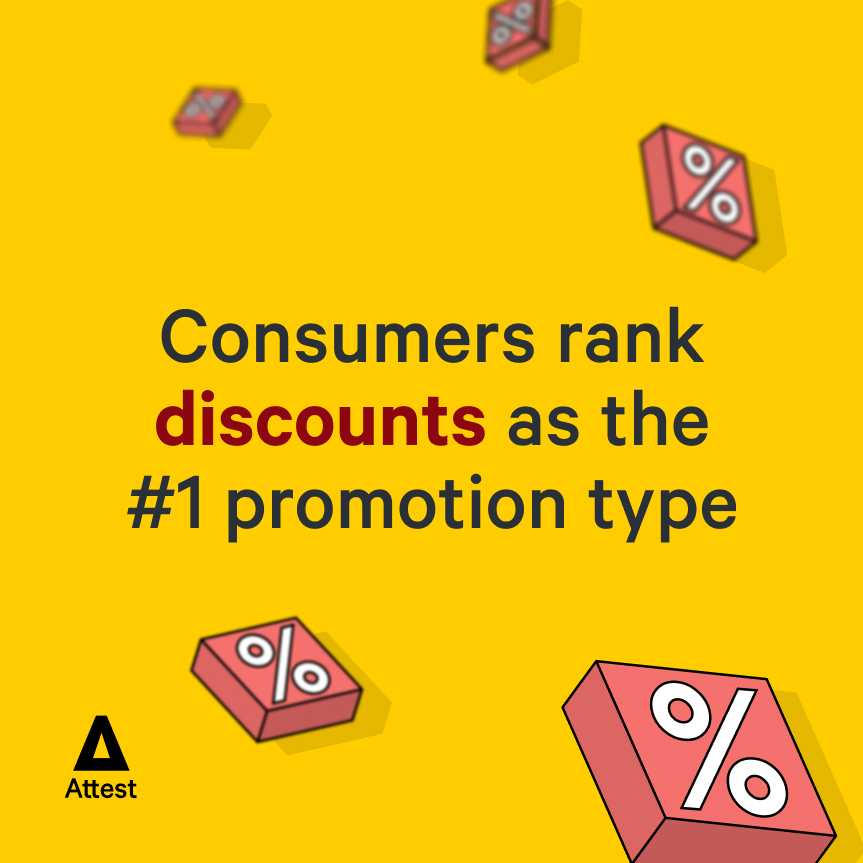
Do you need help making business decisions?
Get reliable data nowTrend 7: Small discounts motivate shoppers
Discounts don’t need to be huge to incentivize shoppers to buy F&B products. We asked respondents about the minimum discount that would persuade them, and the top answer was 20% (29.5% of people said this). A further 21.6% would buy with a 30% discount. 19.1% would be convinced by a discount of 10% or less.
Top tip: Gen X are the demographic most likely to be incentivized by a small discount.
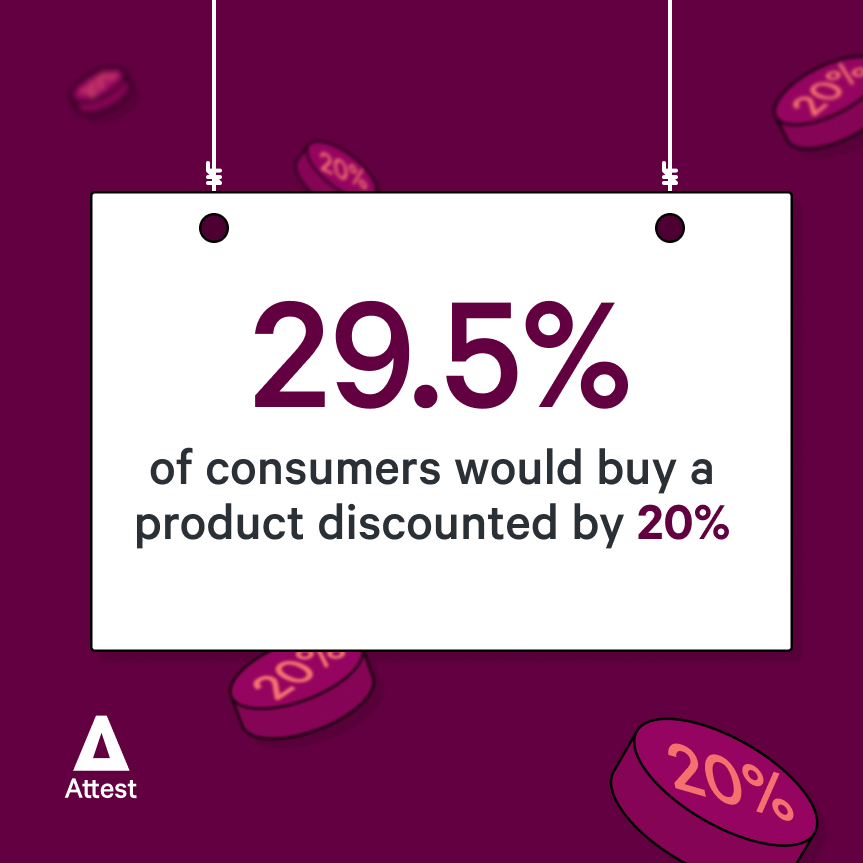
Trend 8: Private-label brands are winning fans
Supermarkets’ private-label brands have benefited from the rising cost of living, with shoppers turning away from more expensive household names. More than 58% of Americans say they are ‘very likely’ to purchase them, with a further 27.3% ‘somewhat likely’. Less than 4% are ‘unlikely’ to buy private-label brands.
Top tip: Millennials and Gen X are most likely to seek out private-label brands, while Gen Z will pick them up if they take their fancy.
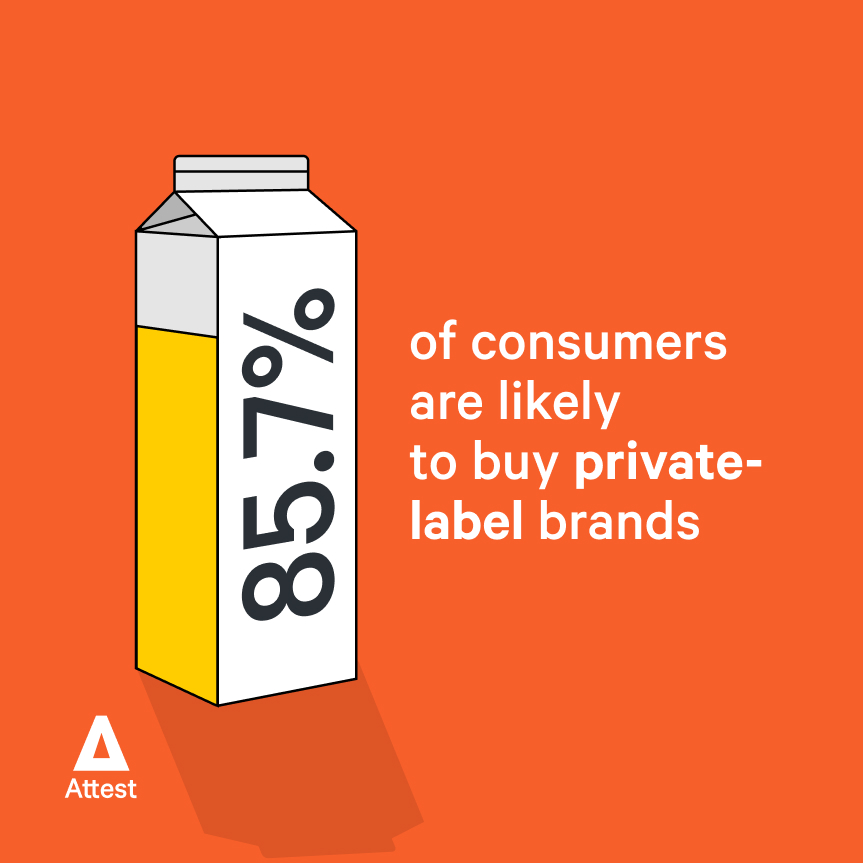
For us, it’s about really understanding these categories that we’ve known for a long time are important to our business but didn’t have a sense of who the consumer actually is and why they’re using it.
Andrea Ramirez, Consumer & Customer Market Insight Manager, Torani

Trend 9: Private-label growth is for the long-term
Even once inflation eases off and the economy picks up, it seems US shoppers have little intention of reverting to household brands. Just over 34% say they would ‘definitely’ stick with private-label brands if price wasn’t an issue, while a further 39.5% ‘probably’ would. Only 9.3% say they wouldn’t stick with them.
Top tip: With more competition than ever, brands will have to work hard on reasons shoppers shouldn’t switch to their private-label counterparts.
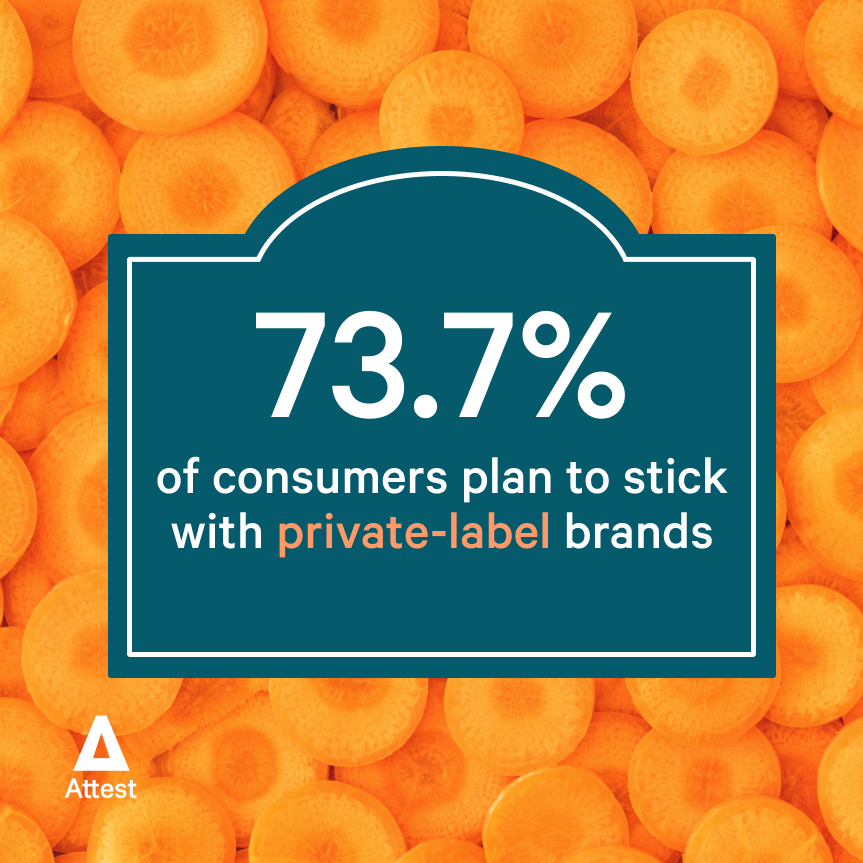
Trend 10: Price is the ultimate battlefield
Lowering prices overall is the primary action supermarkets can take to keep customers: it’s more than 4x as effective than implementing store-wide special offers and promotions (ranked the second most effective action). Interestingly, generalized special offers are slightly more popular than personalized ones.
Top tip: Fancy in-store technology is ranked as the factor least likely to incentivize shoppers, so put plans for new tech on ice and invest in rolling back prices instead.
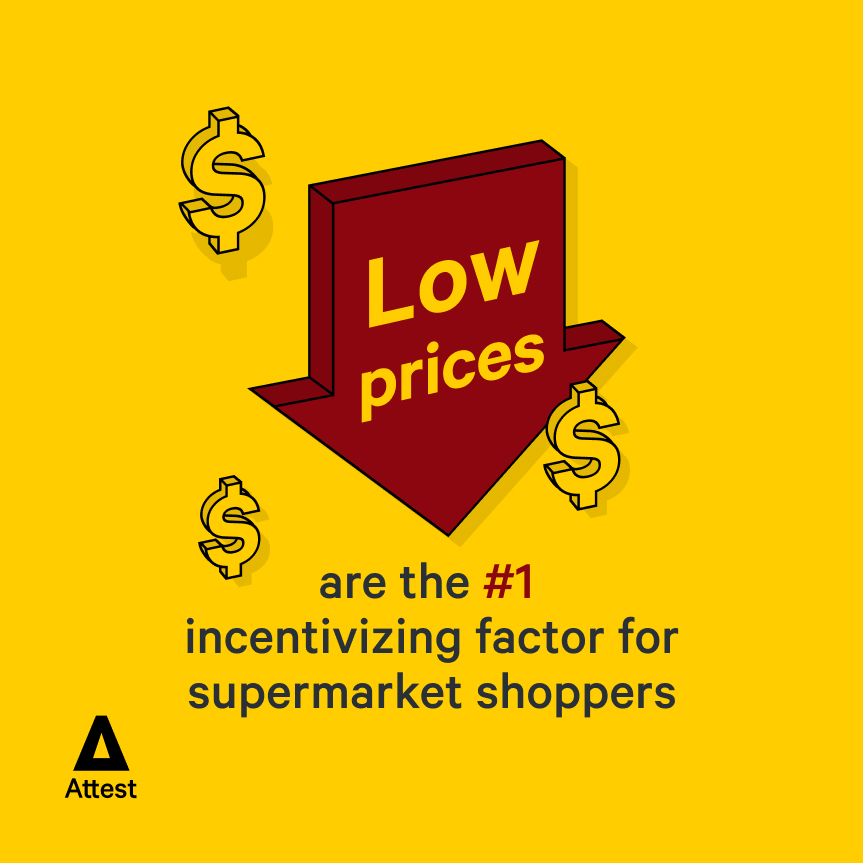
What opportunities do these trends represent
for your brand?
Get a direct line to
inflation-squeezed consumers
Quick and easy to run surveys
Get going in minutes with our intuitive platform and get results quickly, our average survey closes in 1 day 19 hours.
High data quality
We use automated and human checks on your data, you can be sure you’re making the right business decisions.
Research guidance
You’ll be supported by a dedicated industry professional every step of the way to help you get the most from your research.
Find your target audience
Our audience lets you access 150+ million people across 59 countries, and use filters and quotas to make it as targeted as you need.